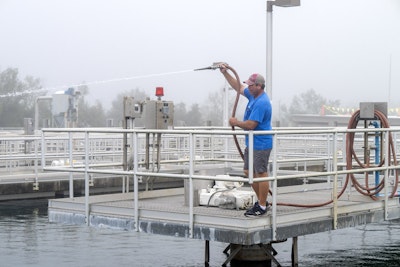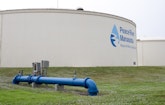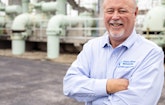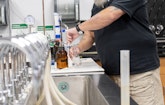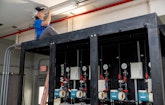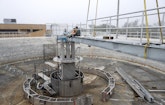
Austin Kortzendorf, left, a maintenance mechanic with the Peace River Manasota Regional Water Supply Authority, helps lead mechanic Chip Chaffee replace a charcoal filter.
(Photo by Chris Tilley)
The Peace River Manasota Regional Water Supply Authority is an independent special district created in 1982 as a water-planning organization in southwest Florida. But the organization’s mission changed in 1991 after a utilities development company in the region went...
